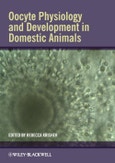Table of Contents
Contributors xi
Preface xiii
Acknowledgments xv
Chapter 1 Oocyte Development before and during Folliculogenesis 1
Melissa Pepling
1.1 Introduction 1
1.2 Germ Cell Cyst and Ovigerous Cord Formation 1
1.3 Meiotic Entry and Progression 4
1.4 Follicle Formation 6
1.5 Follicle Development 9
1.6 Steroid Hormone Signaling in Oocyte Development 13
1.7 Summary 14
References 14
Chapter 2 The In Vitro Culture of Ovarian Follicles: A Brief History and Current Considerations 21
Bahar Uslu and Joshua Johnson
2.1 Introduction 21
2.2 A Brief Historical Review of In Vitro Follicle Culture 23
2.3 State-of-the-Art In Vitro Follicle Culture 24
2.4 The Future of Ovarian Follicle Culture 28
Acknowledgments 29
References 29
Chapter 3 Regulation of Oocyte Meiotic Resumption by Somatic Cells 35
Masayuki Shimada
3.1 Meiotic Resumption Is Negatively Regulated in a cAMP-Dependent Manner 35
3.2 The Regulation of cAMP Level in Mouse Oocytes 37
3.3 The Expression and Roles of PDEs in both Cumulus Cells and Oocytes in Domestic Animals 38
3.4 Closure of Gap Junctional Communication 39
3.5 How to Activate the ERK1/2 Pathway in Cumulus Cells of COC 43
3.6 ERK1/2 in Cumulus Cells Is Required for Meiotic Resumption 45
3.7 Dynamic Changes of Kinase Activities within Oocytes 47
3.8 Conclusion 49
References 49
Chapter 4 Oocyte-Secreted Factors in Domestic Animals 55
Jeremy G. Thompson, David G. Mottershead, and Robert B. Gilchrist
4.1 Introduction 55
4.2 Historical Background 56
4.3 Localization and Specificity 57
4.4 Structure and Genetic Diversity of Gdf9 and Bmp15 58
4.5 Signalling Mechanisms of Gdf9 and Bmp15 60
4.6 Roles of Oocyte-Secreted Factors 61
4.7 Manipulation and Use in Reproductive Technologies 64
4.8 Concluding Remarks 65
References 66
Chapter 5 MicroRNAs in Oocyte Physiology and Development 71
Dawit Tesfaye, Md M. Hossain, and Karl Schellander
5.1 Introduction 71
5.2 Biogenesis of miRNA 71
5.3 Recognition and Post-Transcriptional Regulation of Target mRNA by miRNA 73
5.4 miRNA in Germ Cell Differentiation and Oogenesis 74
5.5 Expression and Regulation of miRNA in Oocyte Development 75
5.6 miRNAs in Oocyte Maturation and Competence 77
5.7 miRNAs as Temporal Regulatory Cascades of Maternal mRNA Translation 78
5.8 miRNAs in Oocyte Development in Relation to Endocrine Control 79
5.9 miRNA Regulation of Epigenetic Mechanisms in the Oocyte 79
5.10 Strategic Approaches and Challenges to Study the Role of miRNAs in Oocytes 80
5.11 Concluding Remarks 81
References 81
Chapter 6 Bovine Oocyte Gene Expression: Identification of Functional Regulators of Early Embryogenesis 85
Swamy K. Tripurani, Jianbo Yao, and George W. Smith
6.1 Introduction 85
6.2 Potential Contribution of Oocyte-Specific Transcriptional and Post-Transcriptional Regulators to Bovine Oocyte Competence: Available Evidence and Gaps in Knowledge 87
6.3 Maternal Oocyte-Derived Factors Required Specifically for Early Embryogenesis 94
6.4 Functional Genomics Studies of Bovine Oocyte Competence and Early Embryogenesis: Identification of Novel Mediators 99
6.5 Conclusions 104
References 105
Chapter 7 Epigenetic Modifications during Mammalian Oocyte Growth and Meiotic Progression 111
Claudia Baumann, Maria M. Viveiros, and Rabindranath De La Fuente
7.1 Introduction 111
7.2 Establishment of Epigenetic Modifications during Postnatal Oocyte Growth 112
7.3 Establishment and Maintenance of DNA Methylation during Oocyte Growth 114
7.4 Large-Scale Chromatin Remodeling during Meiotic Division 117
7.5 Environmental Effects Adversely Influencing the Female Gamete 127
7.6 Chromosome-microtubule Interactions in the Mammalian Oocyte 130
7.7 Conclusion 133
References 134
Chapter 8 Oocyte Calcium Homeostasis 145
Zoltan Machaty
8.1 Significance of Ca2+ 145
8.2 Signaling by Ca2+ 146
8.3 Ca2+ Signaling in Oocytes 150
8.4 Summary 159
References 159
Chapter 9 Oocyte Metabolism and Its Relationship to Developmental Competence 165
Rebecca L. Krisher and Jason R. Herrick
9.1 Introduction 165
9.2 Energy Substrates, In Vivo and In Vitro 167
9.3 Limitations of Oocyte Metabolism Assessment 169
9.4 Mitochondrial Function in the Oocyte 170
9.5 Cattle Oocyte Metabolism 171
9.6 Pig Oocyte Metabolism 173
9.7 Mouse Oocyte Metabolism 173
9.8 Oocyte Metabolism in Other Species 174
9.9 Oocyte Metabolism of Fatty Acids 174
9.10 Oocyte Metabolism Controls Meiosis: A View across Species 176
9.11 Oocyte Metabolism and Redox Balance 178
9.12 The Relationship between Oocyte Metabolism and Oocyte Quality 179
9.13 Maternal Diet and Disease Can Alter Oocyte Metabolism 180
9.14 Oocytes and the Warburg Effect 181
9.15 Conclusions 181
References 182
Chapter 10 Screening for Oocyte Competence 191
Marc-Andre Sirard and Mourad Assidi
10.1 Introduction 191
10.2 Concept of Oocyte Competence 191
10.3 Influence of Follicular Parameters on Oocyte Competence 194
10.4 Morphological Changes of the COC Associated with Competence 196
10.5 Biochemical Changes within the COC Associated with Competence 196
10.6 The Use of Coasting to Induce Competence in Large Mammals 197
10.7 The Use of Genomic/Gene Expression in Follicular Cells to Assess Oocyte Competence 198
10.8 The Use of Genomic/Gene Expression in Cumulus Cells to Assess Oocyte Competence 199
10.9 Signaling Pathways Involved in Competence Stimulation 201
10.10 Conclusion 201
References 202
Chapter 11 In Vitro Maturation Environment Affects Developmental Outcome 207
Pat Lonergan
11.1 Introduction 207
11.2 Oocyte Maturation in Vivo 208
11.3 In Vitro Embryo Production 209
11.4 Improving Oocyte Competence before Removal from the Follicle 211
11.5 Improving Oocyte Competence after Removal from the Follicle 212
11.6 Effect of Oocyte Environment on Embryo Gene Expression 213
11.7 Use of IVM in Practice in Cattle 214
11.8 Long-Term Consequences of in Vitro Maturation 215
11.9 Concluding Comments 216
References 216
Abbreviations 219
Index 225








